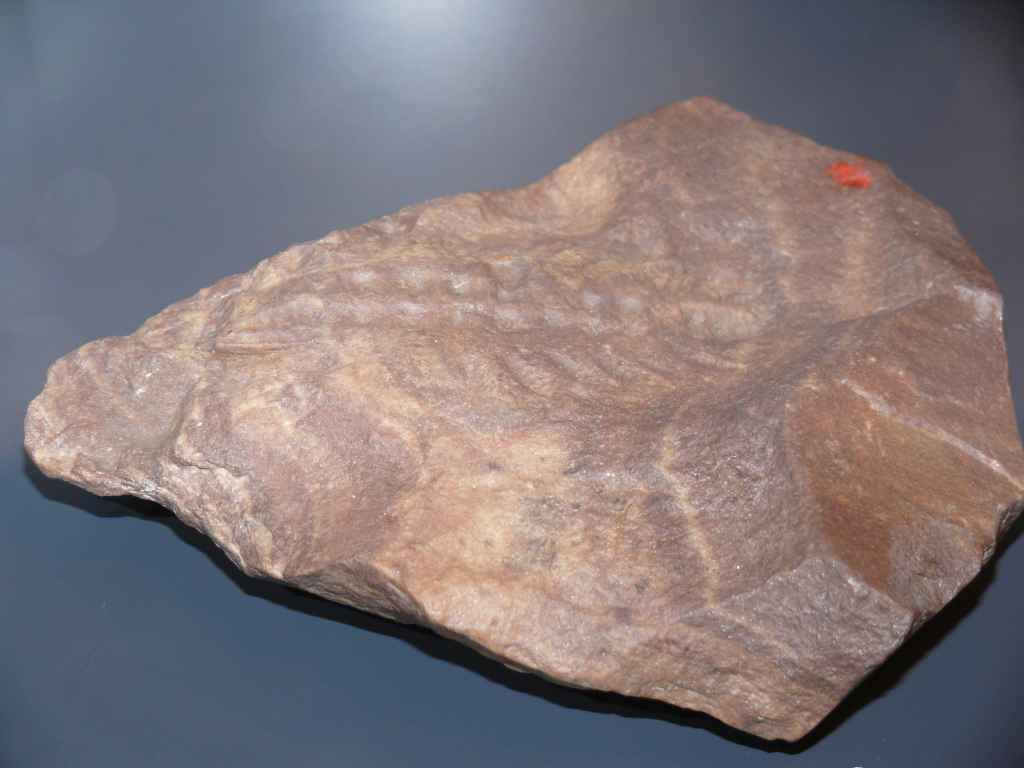- Xenusion
Taxobox
name = "Xenusion"
image_caption = " Xenusion auerswaldae"
fossil_range =Ediacaran - LowerCambrian ?
regnum =Animal ia
phylum =Onychophora
genus = "Xenusion""Xenusion" is a possible very primitive arthropod/onychophore known from two specimens found in glacial debris in Germany. They probably originated in the Kalmarsund Sandstone of Southern
Sweden (Jaeger and Martinsson 1966) and are probably lateNeoproterozoic . The specimens are not especially well preserved. The older specimen is 10 cm or so in length with a narrow, weakly segmented body. A depression runs up the bottom on all but the rearmost segments. There is a slightly bulbous tail, and each segment beyond that seems to have a single pair of tapering annulated legs similar to the modern onychophore, but without claws. Nine segments are present. There is a spine on each body bump and faint transverse parallel striations on the annulations on the legs. The legs of what is possibly the foremost segments are either missing or not preserved. The head is believed to be missing or is poorly preserved. If "Xenusion" is an arthropod/onychophore, it is one of the oldest currently known fossils of a mobile, modern animal."Xenusion" has been reinterpreted as an Ediacaran frond animal by Tarlo, and a convincing drawing of that interpretation has been presented by McMenamin. If the creature is actually an onychophore, the original specimen would appear to be part of an onychophore about 20 cm in length, which is much larger than most extant species.
In a photograph presented in "The Treatise on Invertebrate Paleontology" Volume O, the organism's appearance seems to support the original interpretation more. The presence of 'worm tubes' ("Skolithes") in the Kalmarsund Sandstone would seem to make "Xenusion" somewhat younger than most Vendian fossils. Another likely onychophore,
Aysheaia , is known from the slightly youngerBurgess Shale of British Columbia.There is one known species of "Xenusion", known as "Xenusion auerswaldae".
A picture of "Xenusion" can be found [http://www.ucmp.berkeley.edu/onychoph/onychophorafr.html here] .
References
Basic Palæontology, Benton and Harper, 1997
Wikimedia Foundation. 2010.
